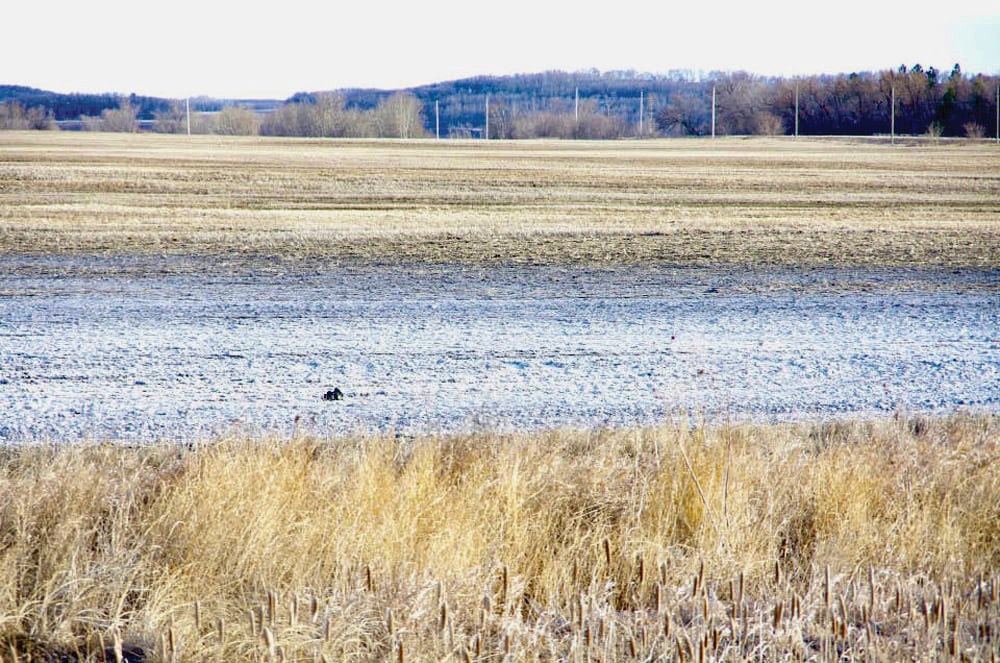Originally published on May 14, 2024 on Grainews
By Jeff Melchior
Glacier FarmMedia — Producers in Saskatchewan and Manitoba are asking plenty of questions about how to manage salinity in their soil.
Jeff Schoenau, a soil science professor with the University of Saskatchewan, is among those fielding questions, although he says the amount of visible salinity in his province is “normal” for April.
“I think probably folks are more interested in salinity and addressing it in farm fields because the value of farmland has gone up, including rental rates, and so people want to more than ever improve the productivity of every acre that they’ve got.”
Marla Riekman, soil specialist with Manitoba Agriculture, has also heard inquiries and has repeatedly been called to speak about it.
“We’ve definitely had a fair bit of concern around it and a lot of questions around how to manage it, how to live with it and what we might be able to do to manage it,” she says.
Soil salinity is not about the salt, but rather about variability in the water table. Dissolved salts are brought up and then left higher in the soil profile as water levels rise and fall. Evaporation during dry periods leaves visible salt on the surface, and there is not enough rain to leach it back underground.
There’s no quick fix — but management is key.
Crop choice is one often-noted tactic. Seeding saline areas to salt-tolerant forages rather than high-profit, sensitive crops like soybeans is a popular choice. But high salinity is kind of like a mouse infestation: by the time you see it, you’re already fighting an uphill battle.
If the situation is bad enough to leave visible salt deposits on the surface, even a salt-tolerant forage will have a hard time getting established.
“We need to be thinking about trying to get the forage established in a year where the salts aren’t as bad, when you have a bit more moisture to seed into and get that little seedling germinated and growing,” Riekman says.
Choosing seed
A choice of salt-tolerant forage depends on the salinity level. For highly saline areas, Riekman recommended strongly tolerant crops such as alkaline grasses, Russian wild rye and AC Saltlander, a green wheatgrass marketed specifically for saline areas.
For lower-level saline soils, there are other options. Soil testing is recommended before making decisions.
“If you are looking at targeting or changing your management in a specific area, getting a soil test done in that area can give you an idea of how saline it is, and then you can start to match the salt tolerance level of the forage with the salt that exists in that patch or that area.”
Test comprehension
Soil tests produce a number based on electrical conductivity in a soil solution. The higher the number, the more salt.
There are two types of soil tests. Most producers use a commercially available, inexpensive and relatively quick one-to-one soil test. Paste soil tests are the other option. This method uses the same amount of soil in the solution as the one-to-one test, but just enough water to create a paste-like consistency.
Primarily a lab tool, that test is comparatively expensive and needs more time and space, making it unpopular for commercial application. It does have one advantage, Riekman notes: it indicates how much salt is in the soil around the root.
Results from a saturated paste test are approximately two times higher than one-to-one results, Riekman warns. Producers can therefore translate commercial test results into what a saturated paste test would offer.
“You take your one-to-one soil test number that you get from your commercial testing lab and multiply that by two in order to compare it to those research numbers,” Riekman says.
Knowing the difference is also key for choosing a salt-tolerant forage. AC Saltlander, for instance, is tolerant up to about 16 deciSiemens per metre (deciSiemen is a unit of electrical conductivity), but that number is drawn from paste test results. Producers would have to divide that by two to properly compare it to whatever number they received from their commercial soil test.
“When you are trying to target or determine what kind of salt-tolerant forage to plant in an area, it is good to do that rough calculation,” Riekman says.
 University of Saskatchewan soil science professor Jeff Schoenau sets up sampling points for a research project involving salt-affected soils. photo: Lynne Schoenau
University of Saskatchewan soil science professor Jeff Schoenau sets up sampling points for a research project involving salt-affected soils. photo: Lynne SchoenauEstablishing salt-tolerant forages can take years — but patience can pay off, Schoenau says, pointing to his team’s research on salt-tolerant green wheatgrass in both saline and non-saline plots.
“Initially, the grass was a little bit slow to establish compared to where it was seeded in a non-saline area,” he says.
“But over a five-year period, the yields got better and better over the years until finally, in the last couple of years, the yield of that green wheatgrass actually was exceeding the yield we were seeing in the non-saline plots.”

